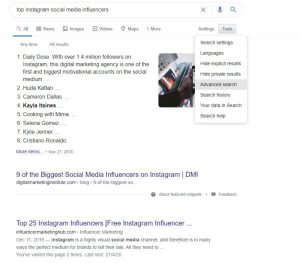Writing a request for proposal can be a daunting task. But columnist David Booth has some guidelines for your digital data & analytics RFP process to help you get what’s best for you and your organization.

The dreaded request for proposal.
It can be time-consuming, stressful, with a sometimes disappointingly low return on investment. And that applies to the stakeholders on both sides of the table.
To agencies and other vendors who respond, it might feel as though the organization that has put out the RFP holds all the cards, but organizations desperate to find help in meeting their goals often are just as troubled by the process, if not more.
And there’s no more vexing dilemma for an organization than trying to source new or emerging talents and skill sets — such as data science and digital analytics — without having the right understanding of what they’re really searching for or what to ask about before calling in outside experts. In fact, that’s likely why they’re looking for help in the first place!
At Cardinal Path (my employer), we often hear from marketers who say, “We know we’re looking for help with our data and analytics and marketing optimization strategy, but we don’t know where to start.”
To that end, here are a few guideposts (and a template at the end) for ensuring that your organization gets the most out of a competitive, and hopefully mutually beneficial digital data and analytics RFP process.
1. Establish the right mindset
If you’re looking for help with your digital strategy or other high-value services, you need to understand that you’re searching for and sourcing a high-value partner that you’ll be comfortable working with, not procuring a service as though you might be buying a software license. That’s the most important aspect of making your RFP process a success for everyone involved.
When you procure a service, you’re usually looking for work that is commoditized and supplied in the marketplace at some level of abundance. In this scenario, there’s nothing wrong with seeking out convenience and the lowest price.
When procuring for mid- to low-level work that can be executed with minimal organizational impact, it’s smart to gather proposals, make the phone calls to check the references and decide quickly.
However, if you’re looking for a long-term strategic relationship with an organization that has the potential to transform the way you do business, you’re not just procuring a service or hiring a vendor.
If data and analytics is core to your business strategy, then you’re actually looking to find and source the strategic partner that not only has the capability to address your needs now but also will fit into your organization and partner in your future success.
A strategic partner’s value is judged by how much they can impact your business, how far they get in helping you reach your goals and what growth or innovation you can create together.
Think of this as more of a consultative approach, as opposed to simply plugging in resources with a specific skill set. A strategic partnership is not just a transactional relationship: It is one that will depend on how well you can collaboratively produce positive outcomes. And it can — and should — have long-lasting positive effects on your business.
Once you’re in the mindset of partnership and working together to go the distance, you’re ready to get into the nitty-gritty of a digital data and analytics RFP process that will uncover the best fit and value for your organization.
2. Be clear about who you are and what you’re looking for
While it seems like an obvious thing to include, I can’t stress enough how important it is for the organization issuing the RFP to provide plenty of clear and detailed background about their situation and themselves.
To set the proper context for the rest of the process, make sure to include a complete background on the company, the services required, the current status relevant to the needs, short- and long-term objectives and any requirements that may impact participation in the RFP process.
The better the information you can provide for RFP respondents, the more they can understand not just what your needs are, but why those needs exist, how they might evolve and whether the respondent is well-suited to provide for those needs.
This is (obviously) good for the organization requesting the services; you don’t want to waste your time wading through the RFP responses of potential partners who were making huge assumptions about whether they could handle your needs based on limited information.
For the respondents, often the most highly skilled and costly resources are dedicating their time to the response process, and no firm wants to dedicate countless hours of their top performers’ talents into responding to an RFP that isn’t a good fit for their organization.
As a result, great firms will evaluate this background (or lack of it), and if the fit isn’t there, they’ll pass on responding to an RFP that’s not good for either party.
Along these lines, providing your decision criteria is also an essential component to a successful RFP process. Not only does it help your organization understand up front what’s most important to you, but it also ensures that your respondents are aligned.
If cultural fit or industry experience or team makeup are most important to you, make that clear up front so that respondents can address your priorities.
Assuming you want to work with great partners that fit well with your organization and its needs, spend the time to lay down all the context you can: The extra work up front will pay for itself many times over throughout the process.
3. Allow for some creativity
Yes, good RFP instruments benefit from rigid, systematic questions and answers, but they also leave some room for your potential partner to offer alternatives based on their expertise or show you why they might stand out in their field.
Of course, you’ll want to gain a strong understanding of a service provider’s business overall. You’ll want to understand things like how long they’ve been in business, their core service offerings and expertise, examples of client relationships, their culture and people and their particular approaches, processes, details and costs around how they propose to solve your problems.
These are the things that provide a uniformity necessary for comparison, and you can uncover them through several key RFP questions.
But also make sure to allow the organization to offer additional information that demonstrates how well-suited they are to the RFP, your organization and your needs. Open-ended questions give you the opportunity to learn things about an organization that can uncover cultural fits (or not) or other things you didn’t even know you wanted to know.
For example, if you’re looking to find a long-term partner for marketing analytics, enable enough flexibility in your RFP to allow the prospective vendor to talk about other value-add and relevant services that could help you further.
In addition to data and analytics-driven measurement and optimization, you may uncover additional services like programmatic media buying, SEM, attribution, data modeling, reporting and visualization, organizational governance, training or a host of things you’ll likely stand to benefit from, either now or in the future. This can speak to the comprehensiveness of a potential partner in an industry that is increasingly convergent.
4. Write clear and probing key questions
To avoid vague and fuzzy responses, don’t write a vague and fuzzy RFP. Make sure you provide a set of questions that is very specific to your needs, and that can be consistently evaluated by one or more people — ultimately you want to be able to make apples-to-apples comparisons with the answers.
Counter to procuring commoditized services, a good practice for finding a strategic services provider is to focus on the specifics of your needs (the why and the value you seek), rather than the granular, tactical details (the how and the what), and your questions should reflect this.
For example, if you’re looking to design and implement a web analytics solution, rather than asking how many lines of code or how many elements should be tracked on a website, you’re much better served by coming back to the need. Why are you deploying a web analytics solution?
A better question might address how a respondent will design and deploy a solution to measure the performance of, and provide a foundation for, optimization of digital assets to support key organizational goals.
Of course, you’ll need to include the questions that address how bidders will solve your specific problems. Here are some examples that can help you get a feel for how a partner will be thinking strategically and if they can both help you now and anticipate and help you prepare for the future:
- What do you think will be the biggest challenges with the requirements outlined in the RFP?
- Explain your approach to client-vendor relationships and what you anticipate needing from us throughout the process.
- While your tool expertise is assumed, explain the relationships you have with vendors of relevant technology.
- What is your approach to project and client management?
- What is the nature and frequency of reporting and status updates you provide?
- Describe at least one difficulty you’ve encountered in this type of work before and how it was overcome.
- How can we ensure that the value of this work is maximized throughout the organization?
- What should we be thinking of as a next step beyond the scope of this RFP?
All of these questions require clear, straightforward answers that help uncover the capacity, expertise and candor of the respondents. What they’re not are questions that ask for minute details about task-level execution.
Last, providing a fair and open opportunity for bidders to ask questions and clarify expectations is crucial, and ensuring that all respondents receive the entire collection of questions asked and answered is equally important.
5. Think long-term
The best strategic partnerships are designed to both begin and continue in mutually beneficial ways. That means the work and the nature of the relationship will continue to evolve from phase to phase.
To ensure coverage through any transitions down the road, be sure to ask about:
- ongoing consult and services to support the proposed work and address future needs;
- knowledge transfer plan and formal training possibilities;
- guidelines governing current and planned or future subcontracting relationships;
- competitive issues and conflicts of interest, both existing and potential;
- sample legal documents (like Non-Disclosure Agreements, Master Services Agreements, Statements of Work and so on);
- financial health and trajectory of the prospective partner; and
- details around the team and people you might be working with.
Regarding competitive issues, it’s important to note that just because a potential partner currently works with or ends up working with a competitor of yours down the road, it doesn’t necessarily mean that the relationship can’t work or flourish. After all, you can benefit quite a bit from partnering with a firm that has direct and relevant experience in your industry vertical.
Instead of potentially depriving yourself of the best firm for your needs, ask how they manage these situations. It’s quite common to find segregated teams and other policies that can mitigate and address competitive concerns, and it’s possible that the nature of the work is different enough to avoid issues altogether.
Don’t be afraid to ask plenty of questions to understand the kind of relationship you’ll have. Whether it’s project-based or a long-term commitment, you want someone who will use their expertise to steer you in the right direction, proactively identify and avoid issues along the way and maybe even tell you some things you don’t want to hear.
But there’s a big difference between partnering with an organization for strategic consulting versus procuring services. You don’t just want agreed-upon services performed from a pool of talent at agreed-upon costs; you want someone that will help you create and execute on the best strategy for your business.
A good strategic partner may even talk you out of a project, recommend a different approach altogether or poke holes in your thinking — but hopefully not in front of your boss!
You’ll pay more for this kind of relationship, but you’ll get more, too. The team of people you’ll work with and grow with will spend the time to understand your business.
They won’t just set about taking on the tasks you’ve laid out before them. Instead, they’ll help you plan and work within the limits and opportunities of your environment to guide you across the digital marketing maturity continuum and make the steady, incremental gains you need to stay competitive in this digital, data-driven era.
6. Be reasonable and specific in your instructions
There’s nothing more frustrating than receiving responses to RFPs that are so different you and your team simply can’t make the comparisons you need to drive your decision.
Responding organizations will always look for ways to “stand out from the crowd,” but you can manage inconsistencies by clearly specifying your submission requirements.
- If you want to limit answers to a certain page-count or word-length, state it.
- If you want specific document formatting or mediums, make note of it or provide templates.
- If you want to evaluate a sample project or give a sample assignment, provide very specific instructions and boundaries around what you expect to receive.
- Be clear about the steps of your process, associated timelines, how materials should be delivered and how you’ll confirm receipt.
- If you expect an on-site presentation, provide your timelines and expectations.
At the same time, remember that this is a process that requires time and attention on both sides, and this can be a great way to establish a mutual respect for each other’s investment in the process. While it may be tempting to ask for everything you can think of, be thoughtful and reasonable about your expectations.
- Provide sufficient time for respondents to go through the process and deliver you a thoughtful and useful response.
- Ask only for information that you plan to use in your decision-making process.
- Try not to write multiple questions to get at a single item you’re looking to assess.
- Be conscious of and clearly state your hard requirements and those you can be flexible on.
- Be as open as possible to feedback from and communication with respondents.
A template for success
The RFP process for finding the right digital data and analytics partner can be challenging, but seeing it as a fantastic opportunity — and providing clear and detailed prompts and requirements — will increase your chances of ensuring you find the right long-term partner.
If you’re looking to do an RFP for data or analytics work in the digital marketing space, here’s a tried and true template that can help get you started.
Some opinions expressed in this article may be those of a guest author and not necessarily Marketing Land. Staff authors are listed here.
(Some images used under license from Shutterstock.com.)
Marketing Land – Internet Marketing News, Strategies & Tips
(77)









